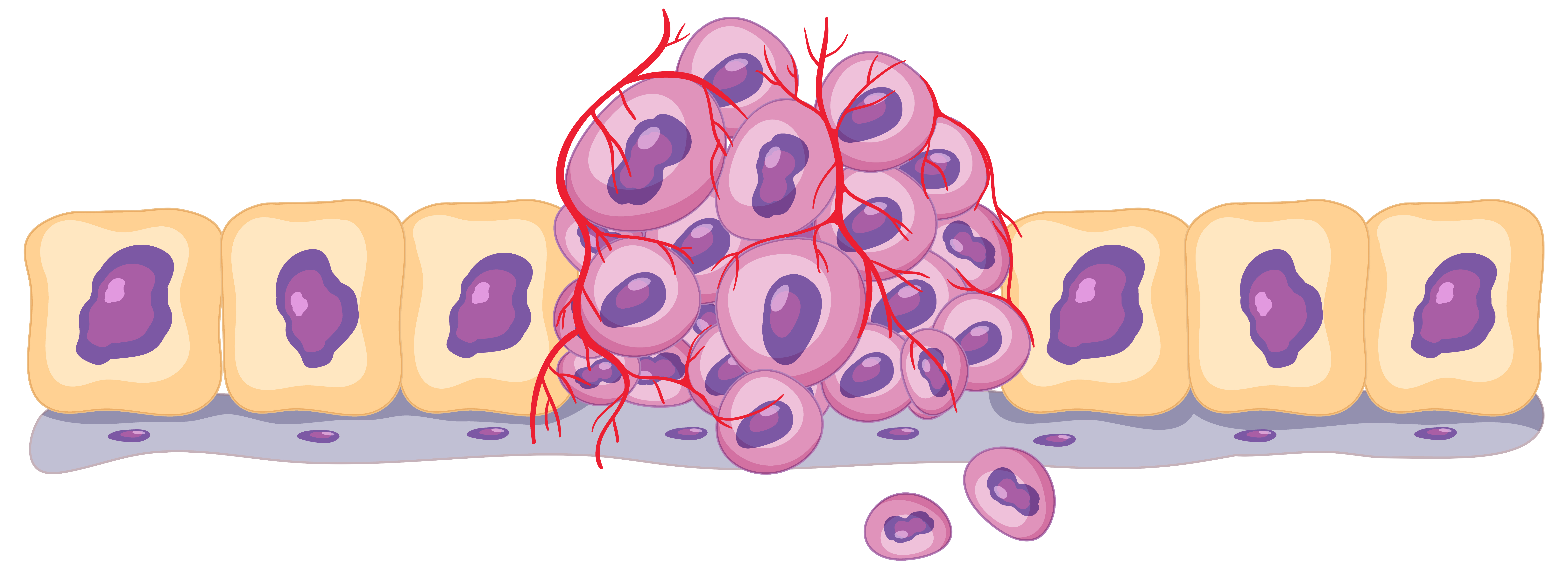
Cancer is one of the top causes of high mortality rate in Thailand. There are factors for the causes of cancers such as certain viral infections, diets, or exposed to carcinogenic particles. These factors have potential in changing genetic components within the cells and the damages taken can result in genetic mutation. Normal cells in the body can mutate and turn into cancer cells, or known as somatic mutation. It is a mutation that occurs later-on in life and will not be transferred to the offspring.
Genetic mutation in cancer cells can affect the numbers of chromosomes in the body (aneuploidy), or can result in genetic amplification which the short regions of chromosome is repeated. These are often the positions of the oncogenes such as MYC. MYC is the first oncogene reported to have increase in quantity in several cancers. The journey of curing cancer from the past to present is still an ongoing battle, with main procedure being surgery that incorporates with chemotherapy or targeted therapy. It is the treatment with the highest efficiency.
However, majority of cancer patients need to have follow-ups after the treatment. This is to prevent cancer recurrence. Most of the follow-ups are an attempt to find tumor markers secreted into the blood vessels (some substances have increase in amount for certain types of cancer). X-rays can be used to portrait the growth of tumor and the investigation to decide whether the tumor is cancer or not can be done with biopsy. The disadvantages are that patients have to undergo an operation, moreover, the process in finding tumor marker is not quick enough.
Nowadays, there is a method for detecting small amount of DNA released from cancer cells and floats around in blood vessels (cell- free DNA, or cfDNA) or known as liquid biopsy. It is an alternate to directly sequencing from tumor. The combine methods in order to find the mutated bases in cancer-associated genes are quantitative PCR (qPCR), Digital droplet PCR (ddPCR), and whole exome sequencing (WES).
Unfortunately, due to the little amount of cfDNA secreted and being highly fluctuated because cfDNA of normal cells is being secreted as well, WES needs to be performed at 100x which is costly in each of the follow-ups. Thus, genome-wide copy number profiling derived from ultra low-pass whole genome sequencing (WGS) for cfDNA that uses for detecting chromosome abnormality of a baby in a womb has been applied to this field. The technique has been applied to cancer patients because there are high potentials that the patients will have aneuploidy symptoms at 0.1x. This also benefits the patients: they don’t have to endure as much, physically, and have lower cost compared to WES.
After that, ichorCNA program, from Broad Institute, USA, will compute tumor fraction by using SCNA data to find the association between percentages of tumor fraction and phenotypes of cancer patients. Then, the evaluation of follow-up plans can be devised immediately. These are the objectives of technicians in creating workflow for the analysis of SCNA and tumor fraction. In light of creating procedures that are quicker and more precise for the follow-ups of cancer patients with chances of recurrence.